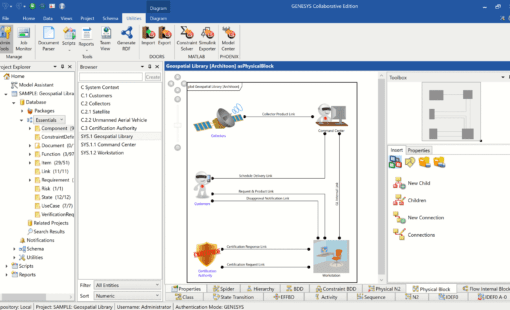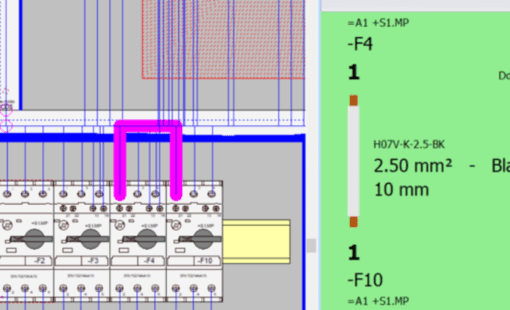
- Blog
Model-Based Systems Engineering has met a growing interest over recent years and is often seen as a method to resolve system complexity and shave off a significant time of the product development process. The growing complexity of cyber-physical systems in modern machinery and equipment has fueled its adoption across a variety of industries. In this blog, you'll learn everything you need to consider before deciding on implementing MBSE.

- Blog
In this week’s blog post we’re sharing an exciting sneak peek of the 2021 R2 release of GENESYS, the latest version of our model-based systems engineering development platform, including a new language option and an extended API.

- Blog
Alex Grove, Account Manager at Zuken, talks about his personal MBSE journey, what his customers experience when embarking on such a journey, and the upcoming Annual Systems Engineering Conference.

- Blog
Today's smart and connected products require the interaction of different components and systems. Their elements are developed in different engineering disciplines and departments. These disciplines speak different engineering languages and require unique views of the same product. The storage of these different versions in the respective departments leads to disconnected silos in terms of processes and data - but digital continuity is here to help!

- Blog
Digital Transformation should go beyond a simple mapping of analog documents and processes into the digital domain. This blog post explores new ways and opportunities to enhance today’s methods and processes for increased efficiency and accelerated innovation.

- Blog
Many manufacturers are harnessing systems engineering approaches to mitigate the complexity of developing increasingly sophisticated products. Systems simulation is a key component of such efforts.

- Blog
As engineers face increasing complexity across electronics and electrical systems, they need a single set of related data to offer insights into the product’s various processes and functions. Simply stated, they need a digital thread for electrical systems.

- Blog
The complexity of electrical and electronic (E/E) systems is accelerating across multiple industries and sectors. Manufacturers are adapting their design and development approaches to meet the changing requirements of advancing electrification.

- Blog
COVID has not only been disruptive to our daily lives but now we’re seeing the effects on our work lives as well. Companies are facing new challenges, from remote tool access to the purchase and distribution of new online tools.

- Blog
Thanks to advancing technology, products are becoming more feature-rich and in turn, more complex. They must incorporate sophisticated electronic and electrical systems to provide the interconnectivity and user experience modern consumers demand. As a result, many organizations increasingly rely on systems engineering.

- Blog
Products are increasing in complexity at an astonishing rate. Smartphones are just one example: today’s devices combine the functionality of yesterday’s phones, cameras, calculators, and pagers and place desktop applications and internet browsers in the palms of our hands. Advancing electrification, mass miniaturization, and IoT-driven digitization are making a vast range of devices smarter and smaller. To cope with these changes, manufacturers must transform the way they develop complex systems. This post compares and contrasts the traditional and modern approaches to developing and verifying products.

- Blog
There’s no doubt about it: products are getting smarter. And that translates to increasing complexity for manufacturers. Traditional mechanical products suddenly require cabling and wiring, internet connectivity, and embedded software to function.

- Blog
Customer demands and marketplace competition are placing engineers under mounting time pressures. An organization’s development schedules must shorten to keep pace with the industry and the wider market. Many established digital tools are now available to accelerate development lifecycles. Simulation is one of them. Engineers use digital simulation-driven design to expedite innovation and move product development forward.

- Blog
Communication between disciplines is increasingly critical as complex designs require more and more collaboration. Communication gaps often riddle engineering companies. E3.WiringChecks and E3.WiringCockpit is here to facilitate communication between design, checking, commissioning, technicians, and all parties involved after the initial design.

- Blog
Manufacturing wants to leap into the world of the Jetsons. But there is one small problem: every time leadership consults a compass, it shows a different way forward. At first, there was digital automation, which was soon replaced by digitization. Then ...

- Blog
In the race to industry 4.0 consistent data is vital for successful digitalization. One of the biggest threats are data silos. Data silos describe the storage of data that remains under the control of one department. Therefore it is typically isolated from the rest of the organization or lives on network folders that have no access control, read-and-write or version control.